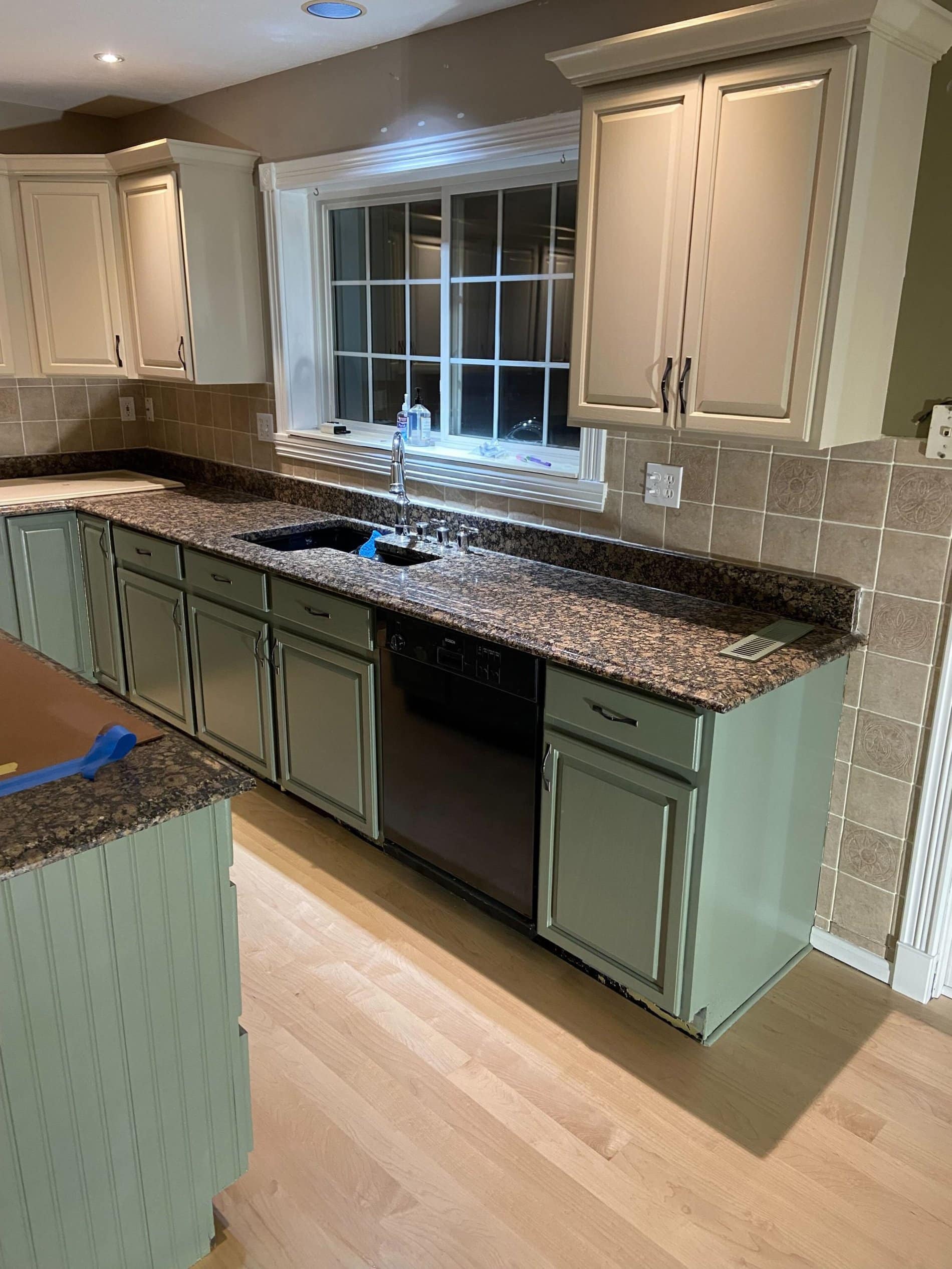How to Clean Oak Kitchen Cabinets
February 6, 2023
How Much Does it Cost to Replace All Kitchen Cabinets
July 10, 2023A crucial step in finishing your project is choosing the type of paint that best suits your needs and those of your painting project. By reading this article, you will know what coating is applied to your home. Furthermore, it explains the differences between oil-based paint and water-based paint.
“Oil-based” or “water-based” refers to the type of solvent used in the paint – the liquid portion that evaporates when the paint dries. Oil-based paints (sometimes mistakenly referred to as enamel) are made with an organic solvent, commonly mineral turpentine. Water-based paint, commonly known as acrylic paint, uses a solvent that, as its name implies, is primarily water.
Oil-based paint vs. Water-based paint: Characteristics
Exterior Use
Oil-based paint doesn’t work well outdoors since it degrades in UV radiation and forms a powdery appearance. Because the paint has little to no flexibility, it cannot expand and contract with the substrate under various weather conditions, increasing the likelihood of breaking.
For exterior applications, water-based paints work incredibly well. This is because water-based paints are significantly more resistant to UV rays, allowing them to maintain their sheen and color for extended periods. It is the ideal choice for exterior applications because of the paint’s mix’s flexibility, allowing it to move with the substrate as it expands and contracts in response to changing weather conditions.
Application
Because oil-based paints are stickier and thicker, they take longer to apply than water-based paints. Oil-based paints emit large amounts of volatile organic compounds (VOCs) during the painting process, giving off the distinct “new paint scent.” As a result of their significantly lower VOC content, water-based paints have a mild smell.
Sheen Levels
Oil-based paints’ chemical composition allows them to dry with a higher sheen level. However, the sheen fades over time. Although water-based paints produce a lower sheen finish, they can often sustain this level longer.
Durability
Oil-based paints often dry harder, offering good resistance against wear and strain. Oil-based paints, however, are more prone to cracking, drying out, brittleness, and chalkiness over time because there is less flexibility in the paint as it dries firmer. Additionally, oil-based paints have a history of fading over time.
There have been a lot of advancements recently that make it possible for water-based paints to dry quite hard and be successful at preventing damage, wear, and strain. Water-based paints are flexible enough to expand and contract with weather changes, making them less prone to breaking.
Surface Conditions
Oil-based paints do not adhere well to surfaces because they repel water, which makes them difficult to clean. Therefore, any surface that gets oil-based paint must thoroughly dry before application.
Water-based paints can absorb moisture, so they can withstand small amounts of moisture on a surface before application. Though the paint will be slightly thinned, this won’t impact the paint’s capacity to bond with the surface and form an adhesion.
Weather Conditions
Oil-based paints can withstand a wide range of weather conditions much better. As a result, humidity and severe temperatures impact paint application, drying times, and long-term performance less.
Water-based paints don’t work as well when applied in adverse weather. Higher temperatures can make the paint dry too rapidly, while humidity and lower temperatures can shorten drying times. A water-based paint’s final appearance and long-term performance may be affected by how quickly or slowly it dries.
Cleaning Process
Turps or other specialized thinners must be used for cleaning up oil-based paints. Since water is the primary solvent of water-based paints, cleanup is significantly simpler. Most of the time, water can be used to clean brushes and painting supplies.
How To Check If You Have Oil-based or Water-based Paints in Your House
It’s relatively simple to test your paint to see if it’s oil- or water-based. Just dab a small area of your wall with methylated spirits and a rag. If the stain matches the color of the wall, it is water-based.
If you want to paint over an oil-based wall with water-based paint, you must use sandpaper to remove the sheen. Apply a primer to the substrate, let it dry, then paint over it with your fresh water-based paint.
Reach Out To Professionals
We advise you to visit your local paint store or consult with professional painters before starting your next project. They’ll be ready to respond to any inquiries you might have and offer guidance on picking the best paint for your job.
If you live in Cleveland, call The Picky Painters. We can help you choose which paint to use for your home. Know more about us by visiting our website: https://thepickypainters.com/
Check out our works

Best Local Exterior House Painting near in Berea Ohio





